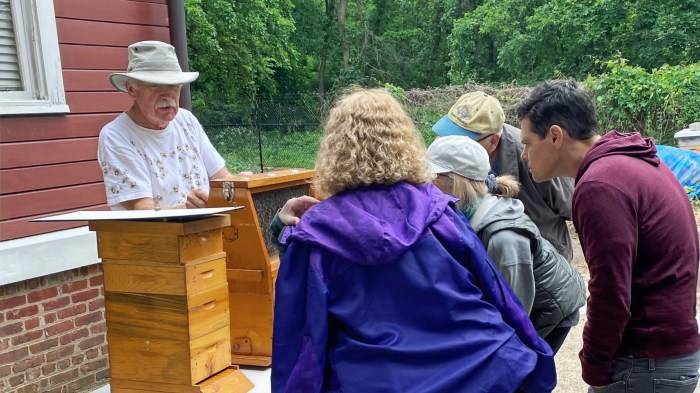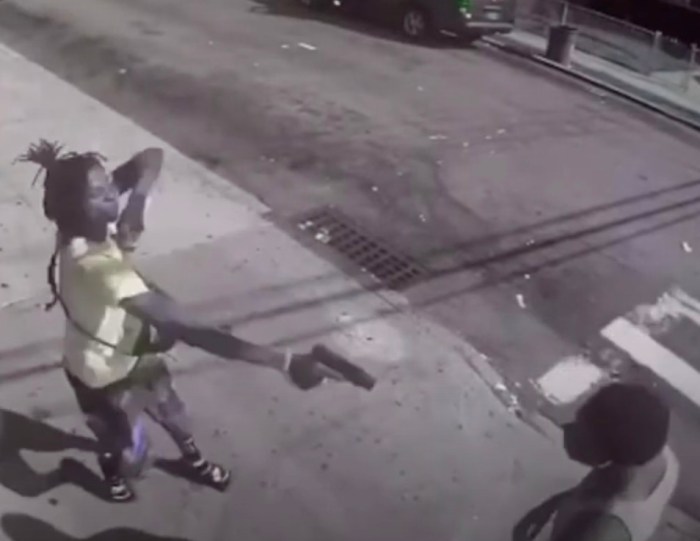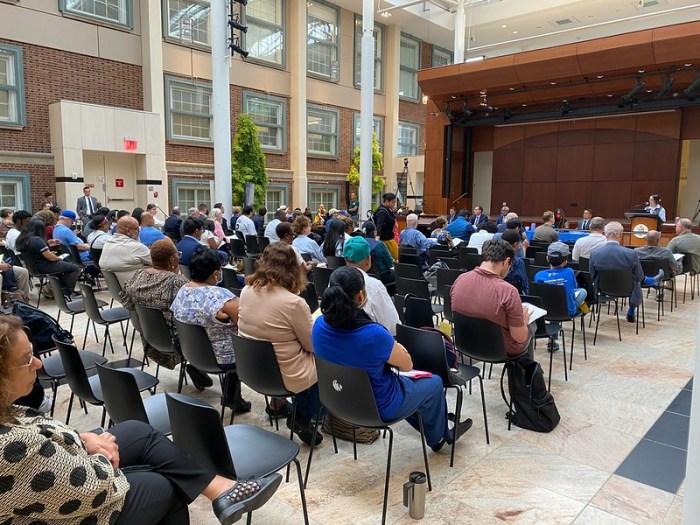By Joe Anuta
The nonpartisan commission charged with drawing new City Council districts has isolated itself from criticism by not completing a comprehensive first draft, critics of the process contended at the final public hearing in Queens last week.
The New York City Districting Commission is composed of 15 appointees from the five boroughs who are supposed to follow a set of rules to redraw the lines in response to population changes recorded in the 2010 U.S. census, ensuring neighborhoods and communities are kept together and federal voting guidelines that prevent discrimination against minorities are followed. A final chance for public input was held at LaGuardia Community College Oct. 10.
After a packed August public hearing in Queens — where community members demanded changes to what many referred to as gerrymandered districts that split certain neighborhoods and denied residents there fair representation in city government — the commission released its first draft of the new maps in early September.
The commissioner, Manhattan lawyer Benito Romano, has repeatedly said the draft lines were not radically changed from the existing layout, but were rather adjusted simply to ensure they fit within the population constraints stipulated by city law.
“The emphasis here is on ‘preliminary,’” Romano said at a Sept. 4 public meeting of the commission in Manhattan. “Instructions to the staff was to produce a proposed map which merely adjusts the Council lines for population so that they remain within the narrow band permitted by law and to see as a baseline, what that would look like.”
But the Oct. 10 public hearing in Queens was the final public comment period in the process. And since, according to Romano’s words, the first draft was merely an adjustment for population, the public will not be able to critique any of the major changes to neighborhood representation drawn by the commission. And those lines will be in effect for 10 years.
“If it feels like deja vu when our members and allies make their statements today, it’s for good reason,” said James Hong on behalf of the Asian American Community Coalition on Redistricting and Democracy. “Little has changed since August, when we were commenting on the current district lines.”
A lawyer for the Asian American Legal Defense and Education Fund contends the slight nature of the adjustments was by design.
“They really insulated themselves from criticism by doing this,” said Jerry Vattamala, a staff attorney at the fund. “Some people in the community feel like, what is the point of the hearings?”
The commission did not respond to a request for comment by press time.
The commission has offered several resources for the public to learn about redistricting, including a program on its website where residents can draw their own districts.
At last week’s hearing, much of the talk focused on the division of Richmond Hill and South Ozone Park, which are currently bisected by Lefferts Boulevard, and changes proposed in what is known as the Unity Maps, which have redrawn districts for the entire city.
A representative from the Queens Civic Congress also provided the commission with a comprehensive map of Queens, proposing changes that would keep neighborhoods across the borough together.
Reach reporter Joe Anuta by e-mail at januta@cnglocal.com or by phone at 718-260-4566.




































